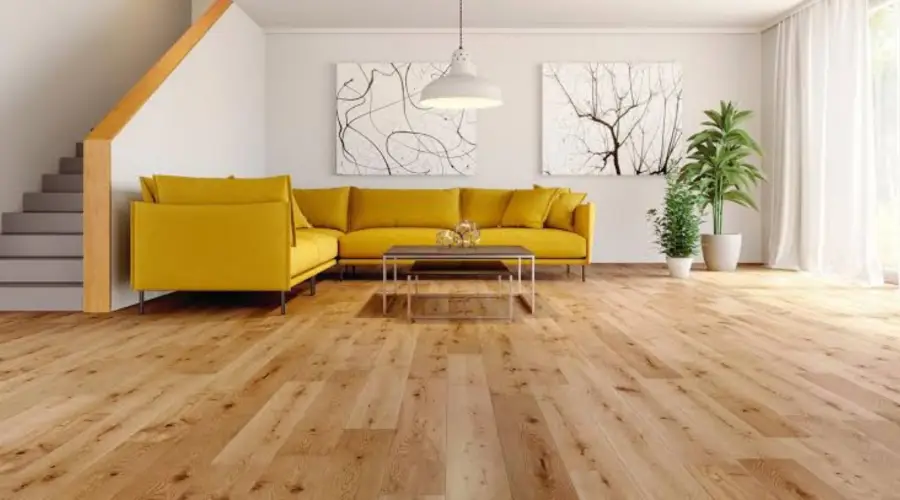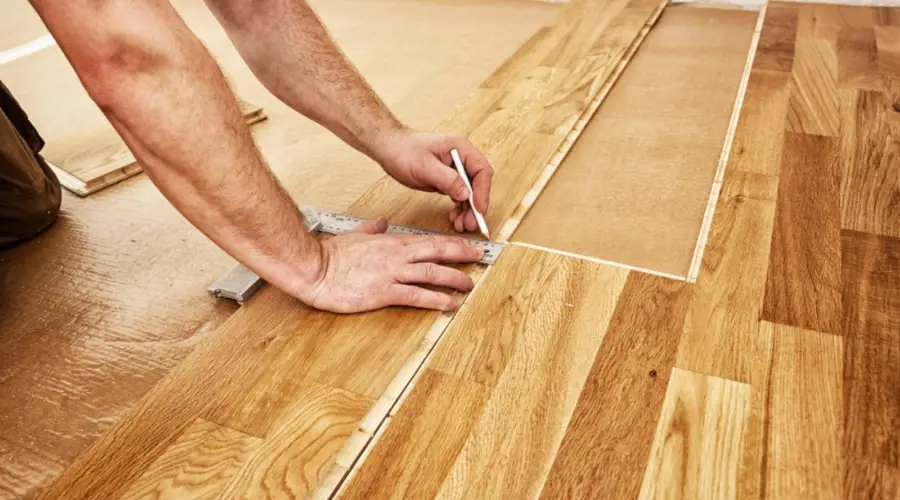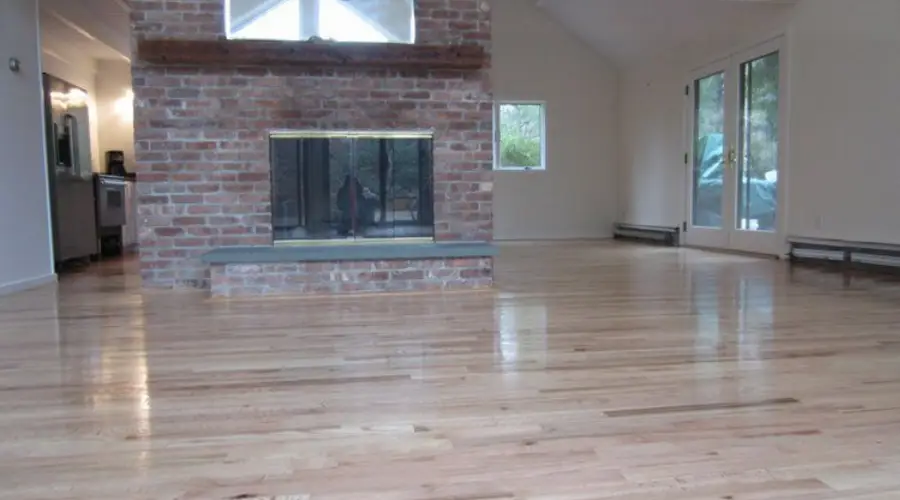Having a living space with a warm, elegant, inviting atmosphere, and a timeless appearance is essential to make a stunning first impression. However, only limited flooring options can cover all these aspects. One such attractive and durable flooring option is hardwood flooring. This blog will explore hardwood flooring, and help you understand the long-term versatility options that it provides.
What is Hardwood Flooring?
Hardwood flooring is a flooring material that uses natural wood in the topmost layer, made of trees like timber, oak, maple and more. They provide timeless elegance, durability, and versatility, making them one of the most preferred choices for residential and commercial spaces.
Types of Hardwood Flooring
Solid Hardwood Flooring

This is a traditional flooring type made from a single piece of wood. It is commonly made of oak, maple, walnut, and other exotic woods, and is typically used as 3/4 inch thick flooring. This flooring is known for its durability, aesthetic looks, and ability to be sanded and refinished multiple times. However, it is more susceptible to water damage, and expansion and contraction caused by humidity.
Engineered Hardwood Flooring

It is a type of hardwood flooring that consists of real wood in the top layer bonded with multiple layers of plywood. This hardwood is generally 3/8 to 3/4 inches in thickness and is known for its resistance to humidity, expansion, and contraction. These features make it one of the most popular wood flooring options.
Acrylic-Impregnated Wood Flooring
As the name suggests, it is acrylic-infused wood flooring that enhances overall durability and moisture resistance. Due to its robustness, this flooring type is very suitable for high-traffic areas.
Hardwood Flooring Finishes
Oil-Based Polyurethane

An oil-based polyurethane finish gives a rich and deep look over time, with its thick layering. It is highly durable and long-lasting compared to other water-based options, but requires a longer drying time, and produces a strong odour. It is widely applicable for high-traffic areas, as it can withstand scratches and wear. However, it requires periodic maintenance to keep its luster.
Water-Based Polyurethane
Water-based polyurethane provides a clear and non-yellowish finish, retaining the natural colour of the wood. It is similar to an oil-based polyurethane finish, but it requires lesser drying time and is ideal when combined with lighter wood. It requires more frequent reapplications, due to its thin protective coating.
Unfinished vs. Prefinished Hardwood
- Unfinished Hardwood requires on-site finishing and allows customised finishes that can match the other space aesthetics. However, it consumes a lot of work and time for sanding, staining, and finishing.
- Prefinished Hardwood offers a factory-applied finish that makes it easy to install. It provides a consistent finish throughout the surface, due to its application in a controlled environment.
Hardwood Flooring Installation Methods
Nail-Down Installation
It is the process of nailing the hardwood into the subfloor and provides strong and stable flooring suitable for solid wood. However, this process is more labour-intensive, and the installation process is noisy, due to nailing. The nails may also not be visually pleasing.
Glue-Down Installation
It is the process of gluing hardwood planks to the subfloor using a special adhesive. It provides more solid flooring and is ideal for engineered wood. However, it could lead to a messy application of adhesive, and the planks are difficult to remove later on, thus reducing its reusability.
Floating Floor Installation
It is the process of interlocking planks with each other, without nailing or gluing them to the subfloor. This installation process is quick and less messy, but may not be stable or durable compared to other methods, especially with solid wood.
Maintenance and Care Of Hardwood Floors
- Hardwood flooring requires regular sweeping to remove dust and debris deposits.
- Occasional damp mopping with a mild cleaner can be used based on the guidelines of an expert.
- Mopping with excess water should be avoided, as it could cause damage to the surface.
- Felt pads and mats can be used at furniture legs and entrances, to reduce wear and scratches.
- In places of heavy foot traffic, reapplication of oils is done every 5 to 10 years, to maintain a smooth and flawless finishing.
Pros and Cons of Hardwood Flooring
Pros
- It provides aesthetically pleasing finishes to living spaces, improving their overall appearance.
- There are a variety of hardwood flooring options, which can be selected to match any desired aesthetic.
- When properly maintained, these floorings can last for decades.
- Hardwood flooring increases the resale value of the building.
- These flooring systems are a great fit for both residential and commercial spaces.
Cons
- They are expensive in terms of material and installation costs when compared to other flooring options.
- They are subjected to wear over time, especially when installed in places of high traffic.
- The installation process requires a lot of time and labour.
- When exposed to moisture, the wood is vulnerable to warping and swelling.
- It requires regular maintenance and careful handling.
Cost Considerations
Material Cost
Solid hardwoods are costly when compared to engineered hardwoods, and the prices vary based on the wood type. On the other hand, although engineering wood is less expensive, the finishing options may increase the overall cost.
Installation Costs
The installation cost of hardwood flooring is generally high, due to its high labour cost. DIY installation options are also available, but these are less efficient.
Long-Term Value
It provides a good return on investment due to its increased resale value, especially when maintained properly. Its high durability and longevity make it a worthy investment in the long run.
Environmental Impact and Sustainability
It is a sustainable choice for flooring when sourced from authorised and well-managed areas. Certified wood products reduce the environmental impact, as they can be refinished and reused as new products multiple times, thereby reducing wastage.
Conclusion
In summary, hardwood flooring provides timeless elegance, and is a durable option for living spaces. It offers versatile floor-finishing options, through different installation methods. It not only increases the overall look but also increases the value of the building. However, it is more expensive and requires a lot of maintenance. Still, its longevity, long-term value, and elegant looks make it one of the most preferred choices in modern construction.

